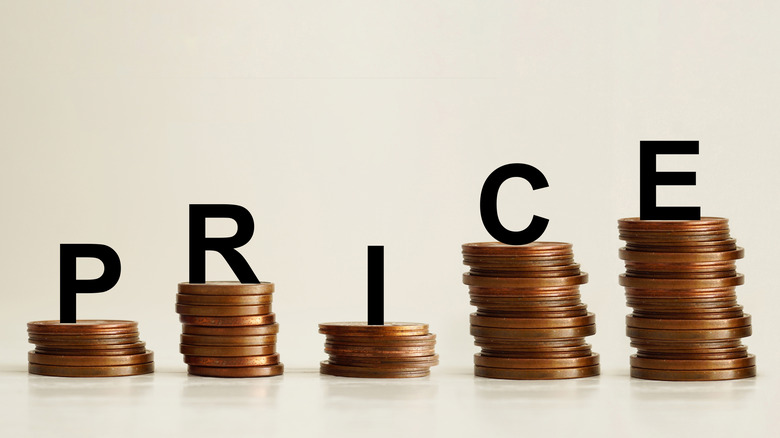Gasoline Prices Jumped Under Trump's Newest Tariffs
The Bureau of Labor Statistics' Consumer Price Index for All Urban Consumers (CPI-U) showed a 1% increase in gasoline prices in June 2025 — after a decrease of 2.6% in May — and this increase in prices coincides with the U.S. beginning to experience the initial pass-through effects of President Trump's tariff policies. When it comes to understanding how tariffs work, the most important thing to know is that any country can impose a tax on goods being imported from a foreign nation. This means that the cost to bring, say, gasoline into the country will be higher — with the specifics of just how much higher based on the specific tariff percentage applied.
Theoretically, U.S. companies that are buying foreign gas could absorb these added costs. However, this is unlikely. Per the National Bureau of Economic Research, during the last period of tariffs (which was in 2018, during Trump's first term), the cost of tariffs was almost fully passed onto the consumer. So, if the past predicts the future, consumers will take on these 2025 tariff increases as well. According to the U.S. Energy Information Administration, the U.S. imported 651,000 barrels per day of motor gasoline in 2024, with the biggest supplier being Canada. In fact, Canada serves as the main gasoline source for multiple states in the U.S., meaning tariffs on Canada, in particular, could have serious ramifications at the gas pump.
Gas prices in the U.S.
Using AAA's Fuel Prices tool in June 2025, Newsweek compared gas prices on June 9 and June 16. They discovered that prices increased from a national per gallon average of $3.124 to $3.410. However, these increases didn't occur evenly across states, with certain states seeing the biggest jumps. On top was Indiana, with an increase from $2.995 to $3.157, and Virginia next in line with a jump from $2.906 to $3.028. Three other states that experienced larger jumps were Delaware, South Carolina, and Illinois.
Gasoline prices will likely continue to rise as more tariffs kick in. For example, Tariff Check specified that the full 35% tariff on Canadian imports (the biggest provider of U.S. gasoline) went into effect on August 1, 2025. This means that consumers haven't yet experienced the full impact of that tariff yet, nor the impact of any additional tariffs that were scheduled to go into effect in August. With that said, gas prices are the result of many complex economic factors, including but not limited to supply and demand and, in summer 2025, the volatility of the situation between Israel and Iran. So, although Trump tariffs will likely drive the price of gasoline up, other mitigating factors could still occur that might cause prices to change even further.
Other impacts of U.S. tariffs
Although consumers can notice the impact of gasoline prices on their pockets every time they go to the pump, that isn't the only area where people may be paying more. These tariffs could also affect prescription prices. As the bipartisan Coalition for a Prosperous America reported in January 2023, China and India provided 90% of the lower-cost generic prescription medications taken in the U.S. As of early-August 2025, Tariff Check lists a 30% tariff on China and a 25% tariff on India and Mexico, with negotiations for potential changes still in progress. Overall, Trump's tariffs are evolving even as new rates are set, making it difficult to predict future price increases.
Trump's tariffs are already increasing the prices of home appliances. In fact, according to the CPI-U, in June 2025, appliance prices spiked 1.9%. Meanwhile, Trump's tariffs are also causing spikes in car prices. Although tariffs are intended to encourage people to buy American-made cars, U.S. carmakers largely import vehicles and individual parts from Canada and Mexico, meaning you will end up paying more for them. Only 48% of popular car models are fully U.S.-assembled, according to Insurify, with data projecting an overall 15% boost in new car prices, and an average 6% rise in car insurance costs because of these tariffs.


